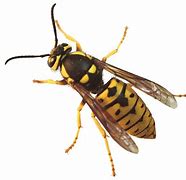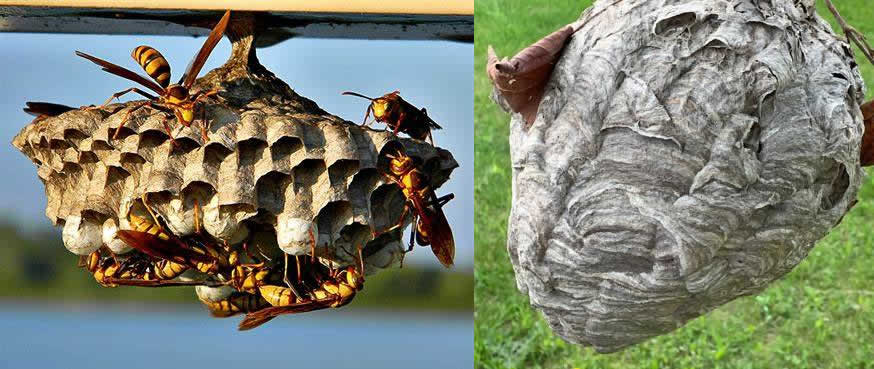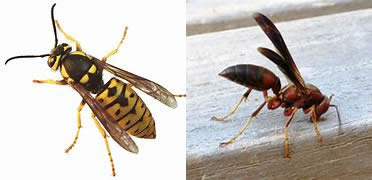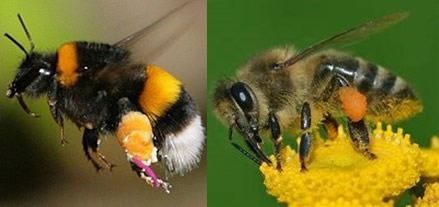FCBA member beekeepers can come to your location to collect a colony of honey bees but before you call, please read all of our information on how to properly identify honey bees. If possible, take photos so our beekeepers can correctly identify the type of insect causing concern.
Are you sure it’s a honey bee? Honey bees are interested in collecting pollen and nectar from flowers, not in stinging you. If you are having problems with an individual or small group of stinging insects chances are they are NOT HONEY BEES.
At the bottom of this page is a list of FCBA member beekeepers that can come to your location to remove a swarm or a collect a colony of honey bees but, before you call, please read the information below to determine if they are honey bees. If they appear to be something else and pose a threat, we suggest you contact an exterminator.
This is a swarm of honey bees. Honey bees swarm to create new colonies, usually in the Spring and Summer. Do not panic. The swarms themselves are not inherently dangerous. The bees are not looking to attack, they’re just looking for a new home. Our beekeepers will gladly come to the rescue! If it's a swarm, how high up is it off the ground? Be honest, tell us if it's 50 feet up in your tree!
 Photos of Honey Bee Swarms
Photos of Honey Bee Swarms
Not Honey Bees
Insects coming from a hole in the ground?
Honey bees construct their hives high above the ground inside a cavity, like a hollow tree. They do not build nests in the ground, so they’re probably not honey bees. Yellow jacket wasps live in colonies in the ground and can be very aggressive. If you feel they pose a threat, we suggest you contact your local exterminator.
 Photo of a Yellow Jacket Wasp
Photo of a Yellow Jacket Wasp
Insects coming from a grey nest hanging from a tree or under a roof?
 Photos of Paper Wasp Nests
Photos of Paper Wasp Nests
Are the insects yellow and black?
Not all insects with yellow and black stripes are honey bees. Both yellow jackets and paper wasps may have a black and yellow pattern on their bodies, similar to Honey bees. Honey bees and bumblebees have a coating of hair, while yellow jackets and paper wasps are hairless. So, if the insects aren’t fuzzy they are not honey bees.
 Photo of Yellow Jacket & Photo of Paper Wasp
Photo of Yellow Jacket & Photo of Paper Wasp
 Photo of Bumble Bee & Photo of Honey Bee
Photo of Bumble Bee & Photo of Honey Bee
CARPENTER BEES
Carpenter bees get their common name from their habit of boring into wood. Carpenter bees do not eat wood but cause damage to structures by drilling circular holes to create tunnels inside the wood. Unlike other common bees, such as honeybees and bumblebees that live in colonies, carpenter bees are not social insects and build individual nests into trees outdoors or into the frames, eaves, or sides of buildings.
Who Do You Call?
All of the FCBA beekeepers below can remove a swarm or a hive of honey bees outside of a home, a structure, or a tree. Colonies inside the cavity of a structure (house, garage, shed) need special attention. This type of removal is called a “Cutout” which is the removal of parts from buildings. Also, removing honey bees that have found a home inside your home, like in walls or attics, can be difficult because it usually requires some amount of costly demolition and fees.
Also, remember that beekeeping is a hobby or a small business so FCBA beekeepers do have other jobs which can make it difficult to return your call immediately. But we will get back to you as quickly as possible.
Dick Conner: Northampton, MA
413-658-5650
- Honey Bee Swarm Collecting
John Piepul: Shelburne Falls, MA
413-237-3431
- Honey Bee Swarm Collecting
- Cut-outs for Honey Bees
- Residential Repair
Roger Reid: Greenfield, MA
413-773-8120
- Honey Bee Swarm Collecting
Greg Cootware: Greenfield, MA (willing to travel)
360*214*1238 Cell/Text For Fastest Response
- Honey Bee Swarm Collecting
- Cut-outs for Honey Bees
Tom Graney: Deerfield, Conway & Greenfield, MA
413-522-7288
- Honey Bee Swarm Collecting
Russ Billings: Amherst, MA
413-636-5924
- Honey Bee Swarm Collecting
Art Canterbury: Montague, Greenfield, Leverett & Sunderland, MA
413-835-6189 Cell/Text
- Honey Bee Swarm Collecting
Ewan Mickolajczwk: Whately, Williamsburg & Hatfield, MA
413-665-3928
- Honey Bee Swarm Collecting
Amy Musante: Dalton, MA (willing to travel)
413-770-3321 Cell/Text
- Honey Bee Swarm Collecting
- Cut-outs for Honey Bees and Bumble Bees
